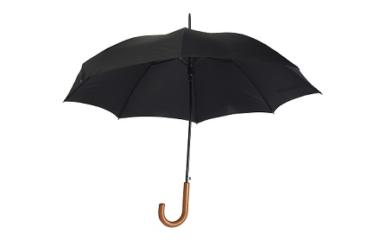Are the umbrella bodies of the charity sector, such as NCVO, ACEVO, NAVCA and the Small Charities Coalition (the generic ones) or Bond (international development), and many subject-specific ones, failing to advocate effectively for the charity sector? And a linked question: to what extent should such bodies be beating themselves up and questioning their very nature and make-up if they fail to secure their advocacy goals?
Such are the issues raised by a challenging but, to my mind, unsatisfactory article by Asheem Singh, former chief executive of ACEVO, in Civil Society News.
I write here in an individual capacity, but have observed charity umbrella bodies as a senior staff member of NCVO in the 1980s, as a chief executive and chair of sundry charities and latterly as a trustee of The Directory of Social Change, which is not a membership-based umbrella body but works closely with them on generic issues affecting the sector.
The alleged failures of the umbrellas
Singh contends that the umbrella bodies have to spend too much time and effort maintaining, serving and pleasing their memberships, are competing inefficiently for a diminished pool of available funding for infrastructure, are focused on “development” at the expense of advocacy, are suffering a brain drain, and for these reasons are failing to be influential advocates. They should therefore be replaced by a radically different kind of single body that works “directly” with the most able policy teams of different charities to advocate for the common interests of charities (yes, the proposed solution does beg as many questions as that summary suggests).
Political roadblocks can be real
The underlying assumption here seems to be that when umbrella charities – or is it charities generally? - fail to achieve their advocacy goals, they are to blame. This is one-eyed, because throughout his analysis Singh doesn’t take into account the political circumstances of the day. Some political and ideological roadblocks can be just too big to shift. If it were not so, all those anti-poverty organisations bewailing “their” failure to stop widening inequalities and suffering would be beating themselves up year after year. Housing charities would be black and blue from self-flagellation. The prison reform charities and refugee charities would have imploded from self-harm years’ ago. Often enough, the political opportunities for short, or even medium-term advances are simply not there, however resourceful the advocacy.
Mistakenly, Singh cites the fact that Rishi Sunak mentioned the gentleness of charities in announcing the £750m package of government emergency support for them during the pandemic, as proof that the umbrella bodies are failing to exert influence. Yet a cultural preconception that charitable endeavour brings us all together in a spirit of kindness and altruism is immensely popular, bought into by huge swathes of the population and of the political class, not to mention the Charity Commission and many charities. It is a long slog in each generation to challenge that stereotype as inadequate, particularly because a lot of charitable activity really is like that. A canny politician will want to tap into that strong feeling. Blame the umbrella bodies? You might as well blame the sea for “failing” to break down granite cliffs.
Consider the political roadblocks to getting more attention and resources from government for the charity sector in the pandemic. The government has a majority of 80 in Parliament. Furlough and loan schemes have actually benefited and even saved many charities. The Treasury is battling to limit the vast financial exposure. Political attention is riveted on explosive issues to do with combatting the pandemic, lockdowns, vaccinations, economic collapse, and the overwhelming of the NHS and care sectors, not to mention Brexit. Moreover, although the work of many charities can be argued to be “essential”, that of very many others, however valuable, clearly is not. Some charities are affected really badly by the pandemic, some not. Yes, I know the counter-arguments, but in these circumstances, it is unsurprising that charity umbrella representatives have struggled to get the hearing they wanted. Nevertheless, they did secure an additional £750m package, whilst sectoral umbrella bodies played their part in securing extra sums in their subject areas such as the arts, children’s work or youth. That’s not exactly either a success or a failure.
The money took an extremely long time to reach charities: shall we blame the umbrellas for that, too? How about blaming Bond for the cut in overseas aid?
The nature of generic umbrella bodies
Most of the time, not very many people or politicians are terribly interested in generic issues about charities. Most people and politicians are turned on by particular causes. Within government, for example, the Office for Civil Society is way down the hierarchy of political salience and has little influence, having lacked the long-term political attractiveness to withstand relegation to the DCMS. Charities representing particular causes often have an easier pathway to influence with government departments and parliamentarians who identify with that cause. Whichever way you design umbrella bodies, that challenge will remain.
Nor should we wish away the different dimensions of their contribution to the sector, as Singh appears to do when he envisages a single non-membership advocacy body rising from the ashes of the existing umbrella bodies. Their members need information, support, connections, resource materials, training, understanding of good practice and the law, how to respond to new cultural currents and topical challenges such as Black Lives Matter, Me Too, safeguarding, GDPR and the like. And indeed, how to campaign and lobby effectively. Those things matter hugely. They can’t just be forgotten in our enthusiasm for advocacy.
Moreover, to see memberships as a drag on effective advocacy is another one-eyed over-simplification. It is notable that Singh gives Kathy Evans (chief executive of Children England) as an example of an effective advocate, when she does so as leader of a membership body of children’s charities. That makes the point that membership organisations, from Kathy’s organisation to the RSPB, from Women’s Institutes to the Ramblers and CPRE, can also be very effective advocates. Indeed, the experience, testimony and participation of members can feed into grounded advocacy and add to its cogency. Singh praises the influence of NCVO and ACEVO in the past, when they were membership organisations, which I think undermines some of his analysis of what the alleged problem is now.
Singh himself makes the point that in advocacy, individuals matter. I agree: individuals with force of intellect, passion, agility and political insight can sometimes have more influence for a while, getting in and among SPADS, journalists and politicians, than entire policy departments of larger charities. Some of them operate from small, under-resourced organisations. If talented individuals can make such a difference, why should they not be operating from umbrella bodies?
There is, however, also the little matter of building sustainable organisations. In the long run, brilliant individuals come and go – by the way, they all have flaws, too - but serious charitable causes require durable platforms for advocacy for the long term. Membership subscriptions are both a reliable source of core income, excellent for sustainability, and an underpinning of independence from government or big donors. Large memberships also convey legitimacy, important in many advocacy contexts, as well as bringing some constraints. In some circumstances, when it comes to changing adverse political weather (as opposed to insider lobbying), mobilising numbers of members can make a difference that brilliant individual advocates can’t. Singh's alternative would lose these benefits and substitute an advocacy body with an unknown (probably “parlous”) funding base and uncertain legitimacy.
I have lived through the de-merger from NCVO of the international umbrella body Bond, the rural umbrella body ACRE and the CVS umbrella body (now NACVA), and watched the creation of ACEVO and of the Small Charities Coalition. The pros and cons were sometimes hotly debated at the time. But lump them all together again in the name of effectiveness when resources are scarce? We would lose the focus and commitment that each is able to bring to the distinctive needs of its particular constituency. Those distinctive interests don’t disappear if you bottle them up in a single organisation instead, as I know from my own NCVO days: they just add to tensions and incoherence within that organisation. Those de-mergers and new creations happened for a reason. Meanwhile, the collaboration between these bodies is now vastly better than for many years’ past.
The struggle to make charities’ voices heard as we would wish is not simplistically to be blamed on the alleged weaknesses of umbrella bodies. All charities should regularly review what they can do better, but not beat themselves up when political headwinds are too strong to make possible the progress they want.
There is beneficial cross-fertilisation, as well as challenge, in the multiple roles that umbrella bodies play, and on balance, their memberships are a source of legitimacy and strength.
The role never was and never will be easy. Sometimes over the years, they have made wrong calls, relying too much or too little on the inside track, being too cautious or incautious, or quarrelling publicly with each other. Like other charities, they can go through bouts of inward-looking pre-occupation. But there is no inherent structural or design reason why the umbrella bodies should not offer sustained and, politics permitting, effective advocacy on behalf of the sector in the years to come, working closely with each other and with charities of other shapes and sizes.
Related articles












